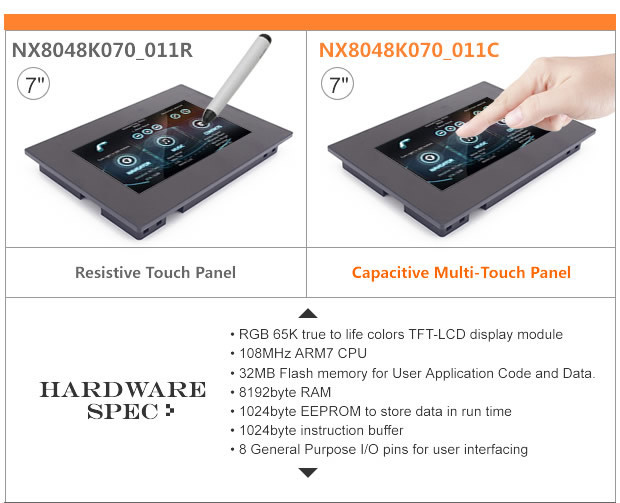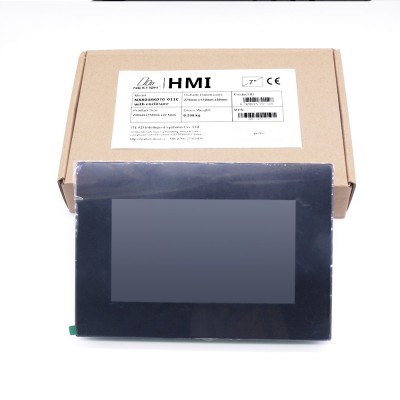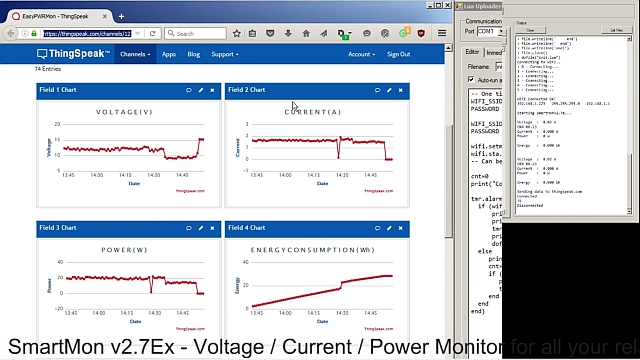is on your own risk !!
Finally Arrived! This was a long awaited one. Postal service at it’s best 🙂
I was asked for a more compact and easy to recharge battery pack solution for the ESP8266 Modules and with the new items arrived in the MailBox, here it is:
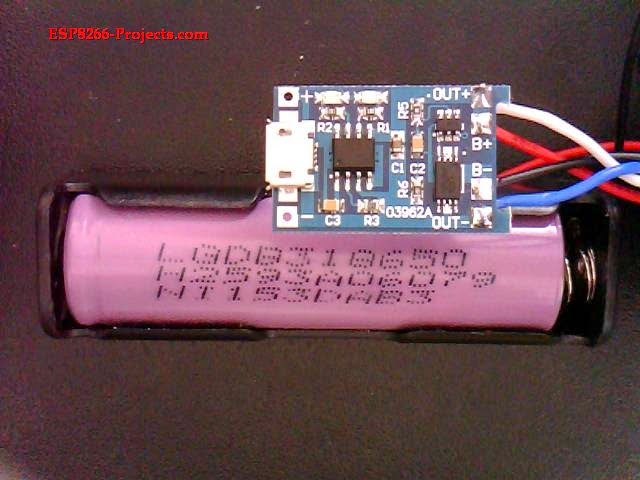 |
| ESP8266 Battery Module |
What we will need:
- LGDB318650 – Rechargeable 3,7V/2600mAh Li-ion Cell
- 18650 Cell holder
- Li-ion Charger/Monitor with protection
- Asorted wires – choose your desired color but red/black, blue/white standard coding with be better 🙂
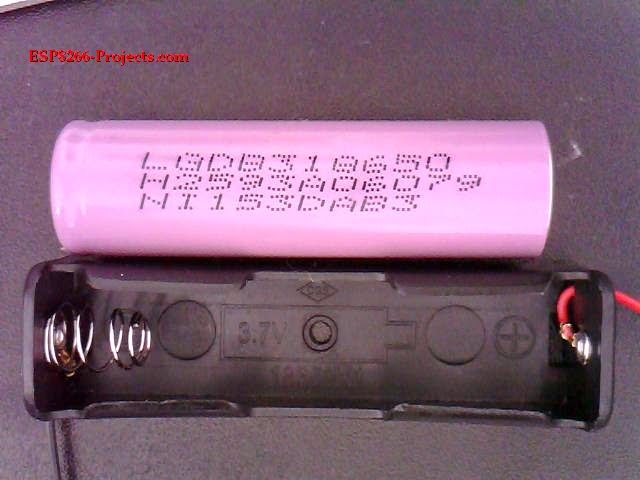 |
| Li-ion Cell and holder |
As the LGDS318650 Li-ion Cells does not have any internal protection been bare ones – usual find in laptops battery packs – we will need to use a charger/monitor with some sort of protection mechanism.
Forget the Ni-Mh abuse if you want to run your Li-ion cells properly and safely for a long lifespan. Li-ion Cells shouldn’t be charged/discharged/drained more than the recommended values to prolong its life and even to avoid a nasty explosion or fire!
The module from the picture below it’s covering decently all the required needs:
- USB compatible constant-current/constant-voltage charger – linear
- Monitor for overcharge/overdischarge and/or overcurrent
- High speed MOSFET Switching protection mechanism
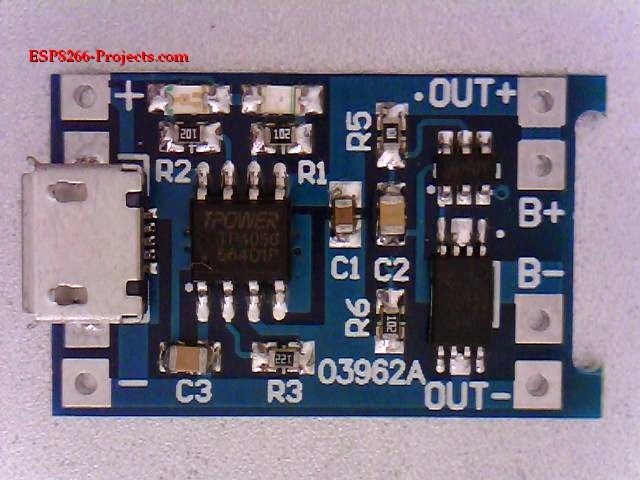 |
|
| Li-ion Cell Charger/Monitor with protection |
It is based on TP4056 1A Standalone Linear Li-lon Battery Charger with Thermal Regulation chip
The TP4056 is a complete constant-current/constant-voltage linear charger for single cell
lithium-ion batteries. Its SOP package and low external component count make the TP4056
ideally suited for portable applications. Furthermore, the TP4056 can work within USB and wall
adapter.
No blocking diode is required due to the internal PMOSFET architecture and have prevent to
negative Charge Current Circuit. Thermal feedback regulates the charge current to limit the die
temperature during high power operation or high ambient temperature. The charge voltage is
fixed at 4.2V, and the charge current can be programmed externally with a single resistor. The
TP4056 automatically terminates the charge cycle when the charge current drops to 1/10th the
programmed value after the final float voltage is reached.
TP4056 Other features include current monitor, under voltage lockout, automatic recharge and
two status pin to indicate charge termination and the presence of an input voltage.
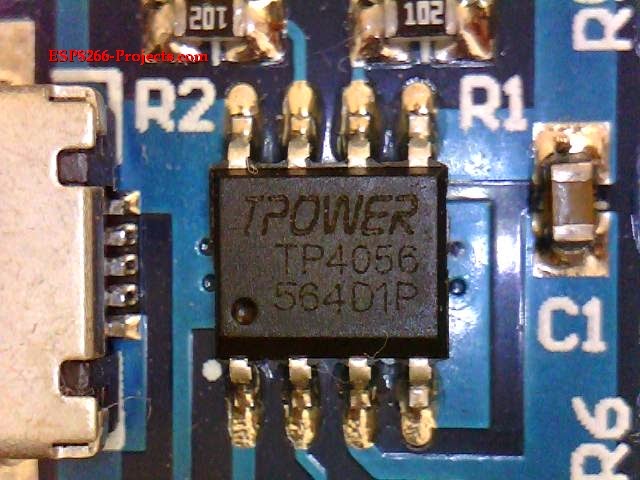 |
| TP4056 – SO8 package |
FEATURES:
- Programmable Charge Current Up to 1000mA
- No MOSFET, Sense Resistor or Blocking Diode Required
- Complete Linear Charger in SOP-8 Package for Single Cell Lithium-Ion Batteries
- Constant-Current/Constant-Voltage
- Charges Single Cell Li-Ion Batteries Directly from USB Port
- Preset 4.2V Charge Voltage with 1.5% Accuracy
- Automatic Recharge
- Two Charge Status Output Pins
- C/10 Charge Termination
- 2.9V Trickle Charge Threshold (TP4056)
- Soft-Start Limits Inrush Current
For more details please see TP4056 Datasheet
TP4056 is accompanied with DW01-G battery protection IC.
DW01-G is designed to protect lithium-ion/polymer battery from damage or degrading the lifetime due to overcharge,overdischarge, and/or overcurrent for one-cell lithium-ion/polymer battery powered systems, such as cellular phones.
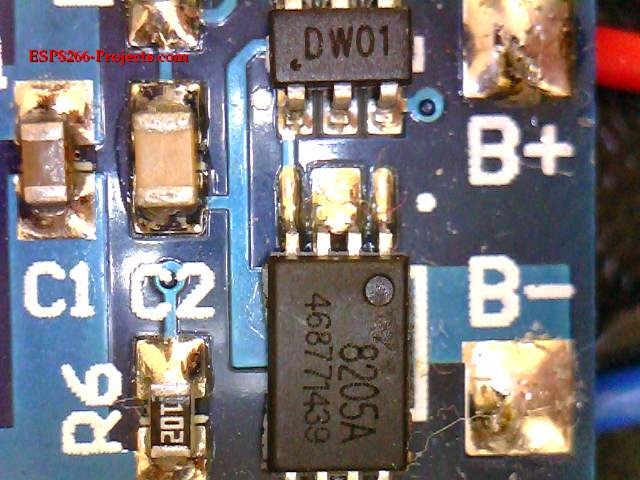 |
| Protection circuit – DW01-G + Mosfet switch |
DW01-G has an accuracy of ±50mV overcharging detection voltage that ensures safe and full utilization charging. Also the very low standby current drains little current from the cell while in storage.
FEATURES:
- Reduction in Board Size due to Miniature SOT-23-6 Package
- Ultra-Low Quiescent Current at 3μA (Vcc=3.9V)
- Ultra-Low Power-Down Current at 0.1μA (Vcc=2.0V)
- Precision Overcharge Protection Voltage 4.25V ± 50mV
- Load Detection Function during Overcharge Mode
- Two Detection Levels for Overcurrent Protection
- Delay times are generated by internal circuits. No external capacitors required
Battery Protection Swithing is done with 8205A Mosfet. The ML8205A uses advanced trench technology to provide excellent RDS(ON), low gate charge and operation with gate voltages as low as 2.5V. This device is suitable for use as a Battery protection or in other Switching application.
We will use this battery solution setup in the future for our battery powered projects.
Stay tuned for more about soon!
